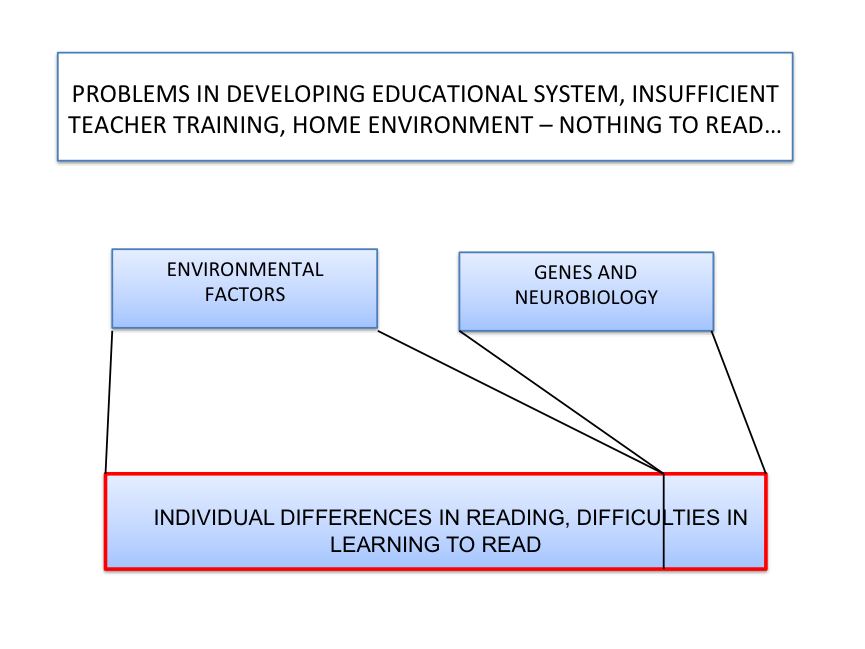How our genes and neurobiological factors and environment affect learning to read?
Studies in behavior-genetics: study of similarities between large samples of identical and fraternal twins – assessing genetic and environmental influences.
Conclusion from many behavior-genetic twin studies to the question “Why do children differ in their reading and related skills?” – is that on average after the first year of formal literacy instruction mostly because of the genetic differences between the children (Olson et. al., 2013).
Yet, reading environment and instruction is important for reading development. If we strongly boost reading instruction (e.g. double the time and intensity) increase in average reading ability would be entirely due to this environmental change. However, individual differences in reading abilities after this boosting will mostly continue to be due to the genetic influences. In turn, this general conclusion is true only at the group level. In individual cases reasons for good or poor reading can be mainly environmental or genetic.
In principle, twin samples with greater reading related environmental variance are likely to show lower average estimates for genetic influences and higher average estimates for environmental influences on individual differences or deficits in reading. As you see in following figures.
(Ahonen, 2014)
(Ahonen, 2014)

